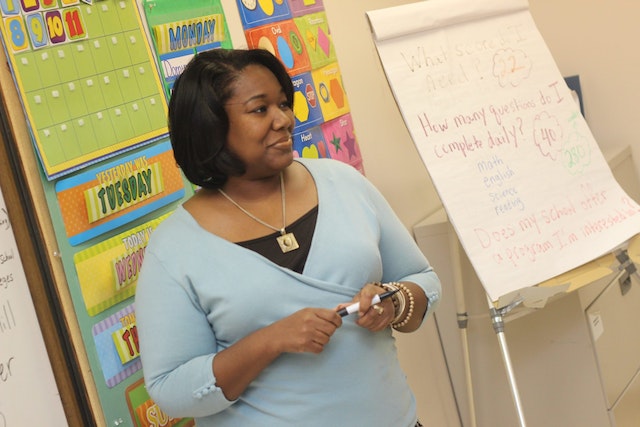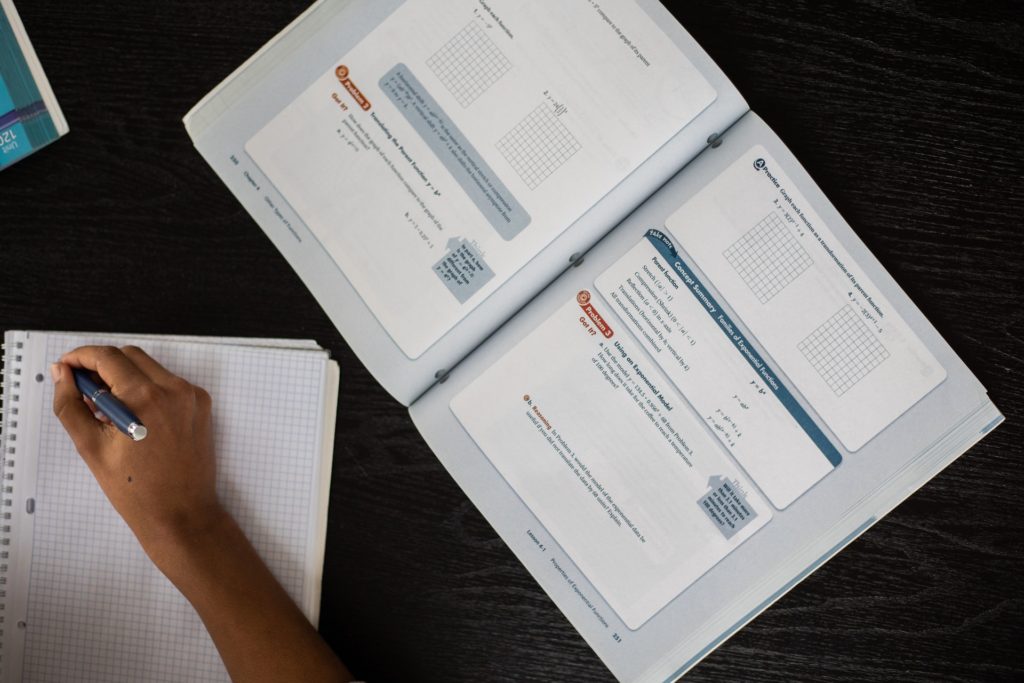Table of Contents
While veteran teachers may consider dressing for school the least of their worries, this isn’t always the case for new teachers or those just starting out at a new school. Teachers may wonder how formally they should dress or if they should instead focus on showing off their personality and fun flair with a personal style. So what should teachers wear at school?
While each school will have its own dress code or general expectations for teachers’ clothing, this article will go into a few practical tips for knowing what to wear on the first few days until the teacher gets their footing in the new environment. The article will also discuss some research on different styles of clothing for teachers and how it may, or may not, affect their students.
Research Based Tips for What to Wear When Teaching
Research into teachers’ clothing focuses on a couple of qualities. Firstly, it focuses on levels of formality. What is considered formal or casual will depend on the culture the school is in and how it compares with what other teachers wear.
The second aspect, connected to the first, is how “differently” the teacher dresses. This can be based on using a personal style or simply dressing more casually or formally than the average teacher at the school. Teachers who stand out in the way they dress are viewed differently, whether that is a good or bad thing depends on several factors.
Value First Impressions
The research into student perception of teacher clothing is fairly clear in the general trends. Teachers who dress more formally are viewed as more knowledgeable, organized, but also more strict. Teachers who dress more casually are generally associated with being friendly, approachable, and interesting. (Butler, and Roesel) (Phillips, and Smith)
While both of these sets of qualities can be good, teachers should be mindful about the impression they want to make with their students at first. Which style is more appropriate may depend on the individual teacher, the class they are teaching, and the classroom environment they want to create.
Teachers who want to give off an air of authority and knowledge might want to dress a bit more formally at first to create a strong first impression. This approach might be especially for new teachers, or those who look very young, in order to be taken more seriously.
On the other hand, teachers who want their classroom to be more inviting or fun might want to dress a bit more casually or with a bit of individual flair. This approach can be useful for teachers of art classes who want students to feel welcome and willing to share their opinions.
Don’t Try Too Hard.

First impressions can be important to set the tone for the class, but after that clothing becomes less important as the year goes on. Students will get comfortable with their teacher and need to focus on lectures rather than style.
Research shows that dressing more moderately is “least salient and distracting to students, allowing them to focus largely on the information being presented rather than the unusual clothing of the teacher.” (Dunbar, and Segrin)
This research was based on the Expectations Violation Theory that posits that things that differ from the norm are more noticeable to the brain. Things that are different from what is expected take attention and cause people to question why there is a difference.
What this means for teachers dressing is that after a few good first impressions, teachers should simply dress reasonably similarly to their colleagues as possible so that the focus is on their lesson, not their Crocs in a sea of dress shoes. That being said, if a teacher has a slightly different level of formality or style of dress from their colleagues, that may be briefly more distracting to students, but if the teacher continues wearing similar clothing that matches their style, the students will quickly become accustomed to this and it will no longer be distracting.
The point of this research is not that all teachers should be wearing uniforms, but that they should simply avoid drastic changes in their wardrobe. There is no need to be wearing flashy new clothes every day to impress students.
Instead, teachers should wear clothing that is comfortable and that gives of a professional and friendly feeling. Then they should simply stick to their style rather than experimenting a lot or dressing to impress as the year goes on.
Most Students Won’t Care About The Teacher’s Clothes.
One of the main reasons teachers should not bother dressing to impress their students is that some research shows that most students simply do not care what their teacher wears. While there may be some subtle impressions given off by the style of dress a teacher chooses initially, other factors such as the teacher’s personality and teaching ability quickly overpower the small impact clothing may have.
This was less true for teachers in university however, as researchers found “that while there were no statistically significant differences in secondary students’ perceptions about their teachers’ professional attire, there were significant differences in students’ perceptions at the tertiary level.” (Joseph)
Nervous teachers can take heart that, unless they are a university professor, students will not be judging a teacher by their clothing choices and will be far more impacted by other factors. As long as teachers are not in sloppy sweatpants, the clothing a teacher chooses should probably be based more on other teachers and administrator’s expectations rather than any effect in the classroom.
Look for Pictures Online for What to Wear to School.
Despite the research showing that students will not care what their teacher is wearing, some new teachers may still want a bit of guidance to not embarrass themselves on their first day at a new school. Knowing what to wear on the first day of a new job can be stressful, but there are a few simple tips that can give some insights into what is most appropriate and safe to wear.
The easiest thing a teacher can do is go on to the school’s website and look for pictures and videos from inside the classrooms. They can then pay special attention to what teachers are wearing in these videos.
While some schools may have teachers gussie up a bit for a promotional video, the clothing shown in these videos rarely is drastically different from what teachers would wear on a daily basis. Even if it is a bit more formal than the everyday wear of most of the teachers at school, wearing something similar to the teachers in the promotional videos is a great approach.
Especially on the first days of school, wearing clothes that are a bit on the nicer end of things is totally normal. Many teachers, new and old, will be wanting to start the year off fresh and strong with their nicest clothes to greet colleagues for the year.
Just Ask What Teacher Should Wear to School.
Beyond just looking online, there is another very easy source to know what is appropriate to wear for the first few days. Simply ask!
Simply email the administrator or head teacher that conducted the hiring interview asking what type of clothing is most suitable or if there are any specific dress codes for teachers. While most schools do not have a strict dress code for teachers, the administrator or head teacher will completely understand the question and be able to give some basic pointers about what to avoid or what is a safe choice.
Conclusion
While clothing is not a terribly important aspect in teaching practice, choosing the right clothes can give off a good first impression to students and fellow colleagues. While expert teachers may have a go-to style, the research in this article might still be useful to help them start off their next year with a different atmosphere.
So, what should teachers wear at school? Teachers that want to have a bit more order or get a bit more respect might dress up a bit more than usual for their classes. If, on the other hand, the teacher is hoping for a lighter or more engaging classroom this year, they could go with something more fun, bright, and colorful to signal to students that they too can be themselves.
While what exact clothing choices are most appropriate will be completely dependent on the culture of the school, generally teachers should simply try to not make clothing a talking point. Dressing moderately and in a similar level of formality with other teachers will keep students focused on the lesson rather than on the sleek new dress or weird hat of their teacher.
Generally, students will not care what their teacher is wearing, and other factors of a teacher’s personality are far more important in creating a good impression for students. To make sure clothing choices are not totally off base, teachers can simply go online to see what teachers are wearing in photos and videos on the school’s website and simply shoot a quick email to their admin or HR team to make sure their choices won’t turn heads during staff orientation.
Want more like this? Make Lab to Class a part of your weekly professional development schedule by subscribing to updates below.
References
Butler, Sara, and Kathy Roesel. “The Influence Of Dress On Students’ Perceptions Of Teacher Characteristics”. Clothing And Textiles Research Journal, vol 7, no. 3, 1989, pp. 57-59. SAGE Publications, https://doi.org/10.1177/0887302×8900700309. Accessed 10 Oct 2022.
Dunbar, Norah E., and Chris Segrin. “Clothing And Teacher Credibility: An Application Of Expectancy Violations Theory”. ISRN Education, vol 2012, 2012, pp. 1-12. Hindawi Limited, https://doi.org/10.5402/2012/140517. Accessed 10 Oct 2022.
Joseph, Stephen. “Student Perceptions Of Teacher Professional Attire”. Journal Of Education And Human Development, vol 6, no. 1, 2017. American Research Institute For Policy Development, https://doi.org/10.15640/jehd.v6n2a4. Accessed 10 Oct 2022.
Phillips, Pamela, and Lyle R. Smith. “The Effect Of Teacher Dress On Student Perceptions.”. Augusta College, 1992, https://files.eric.ed.gov/fulltext/ED347151.pdf. Accessed 10 Oct 2022.



